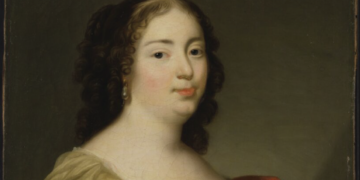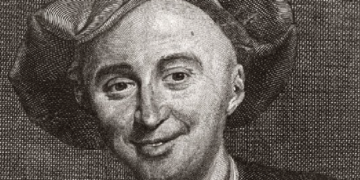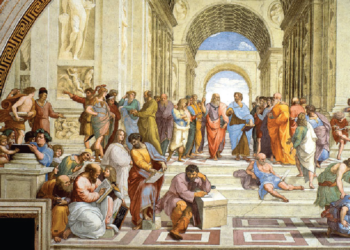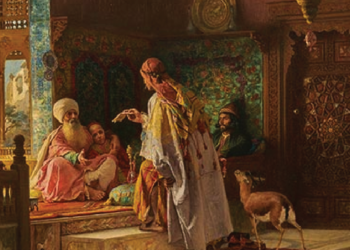Gutierre de Cetina
1) His Biography
Gutierre de Cetina was born in Seville around the year 1519, into a noble and affluent family, which granted him access to a humanist education steeped in the ideals of the Renaissance. His early years were likely shaped by his exposure to the intellectual and literary circles of Andalusia, a region known for its vibrant cultural atmosphere. This environment helped cultivate his passion for classical learning and poetic expression, particularly the refined style of Italian verse, which would later heavily influence his own work.
In his youth, Cetina served as a soldier under Emperor Charles V, participating in various military campaigns across Europe. His travels took him to Italy and Germany, where he became further acquainted with the poetic trends of the time, including Petrarchism and the lyric innovations of Italian masters such as Ludovico Ariosto. These experiences profoundly influenced his literary voice, merging the martial world of the soldier with the delicate aesthetic of the court poet. Though trained for combat, Cetina increasingly leaned towards the pen rather than the sword, developing a reputation as a skilled writer of madrigals and sonnets.
After his time in the imperial army, Cetina returned to Spain but eventually relocated to the New World. Around 1546, he moved to Mexico, then part of New Spain, where he continued to write and cultivate his poetic talent. In Mexico, Cetina became an active figure in the colonial literary scene, contributing to the cultural life of the Spanish elite. He also took on bureaucratic roles within the colonial administration, balancing his poetic pursuits with practical obligations in the New World.
Cetina’s poetry reflected a sophisticated blend of European and Iberian influences, and he was among the first Spanish poets to fully embrace the Italianate style in the Americas. He translated and adapted numerous forms of Italian poetry into Spanish, notably bringing the sonnet and madrigal into wider use among Spanish-speaking poets. His verse is characterised by a melancholic elegance and a deep sense of introspection, often reflecting on themes of love, beauty, and disillusionment.
Though he enjoyed some recognition during his lifetime, Cetina’s literary career was ultimately cut short. His life came to a tragic end in Mexico, where he was fatally wounded in a street fight in 1557, supposedly as a result of a romantic rivalry. The details of his death remain somewhat obscure, shrouded in anecdote rather than firm historical record, but his untimely demise left Spanish letters poorer by the loss of a promising poetic voice.
Despite his relatively short life, Cetina’s work survived through manuscript circulation and was posthumously appreciated for its lyrical elegance and classical refinement. His poetry resonated with later generations of Spanish writers, who admired his seamless fusion of Spanish language with Italian poetic forms. Although he did not publish a collected edition of his works during his lifetime, his poems were preserved by admirers and scholars who recognised his literary value.
In later centuries, Gutierre de Cetina came to be seen as a transitional figure between medieval Spanish verse and the flourishing of Golden Age poetry. His contributions helped pave the way for poets like Garcilaso de la Vega and Luis de Góngora, who would build on the foundations he laid. Cetina’s life and work thus represent a vital chapter in the story of Spanish Renaissance literature, bridging continents and artistic traditions in a brief but impactful career.
2) Main Works
“Ojos claros, serenos” (Clear, Serene Eyes)
This is Cetina’s most famous madrigal and a masterpiece of Spanish lyric poetry. In it, the speaker addresses the beloved’s eyes, once calm and kind, which now appear distant and cold. The poem reflects on the shift in affection and the pain of unrequited love. Its elegant simplicity and emotional depth have made it a staple of Spanish literary anthologies.
Sonnets (Various)
Cetina composed a large number of sonnets in the Petrarchan style, exploring themes of idealised love, inner conflict, and poetic inspiration. His sonnets often feature classical allusions and a refined emotional tone, borrowing heavily from the Italian tradition while maintaining a distinctly Spanish voice. Notable sonnets include meditations on fleeting beauty, the cruelty of time, and spiritual longing.
Epístolas (Epistles)
Written in poetic form, Cetina’s epistles are addressed to friends, fellow poets, and patrons. These works offer insight into his personal life, artistic ambitions, and the literary culture of his era. They blend personal reflection with classical references, often engaging with moral or philosophical topics.
Elegías (Elegies)
His elegies mourn the death of friends or lament the sorrows of love and life. Marked by a sombre and introspective tone, these poems reveal Cetina’s preoccupation with loss and transience. Though fewer in number than his love poems, the elegies showcase his ability to evoke melancholy with grace.
Canciones (Songs)
These lyrical compositions often address themes of passion, longing, and devotion. They are characterised by a musical rhythm and were likely intended for musical accompaniment. Many of the canciones echo the influence of Italian models, especially in their exploration of emotional vulnerability.
Madrigals (Various)
Besides “Ojos claros, serenos,” Cetina wrote many other madrigals, short lyric poems focused on themes of love and beauty. These pieces are notable for their brevity, clarity, and intense emotional expression. The madrigals often highlight moments of emotional tension or the paradoxes of desire.
Translations and Adaptations
Cetina also translated and adapted works from Italian poets such as Petrarch and Ariosto. While these were not original compositions, they played a key role in introducing Renaissance Italian poetry into the Spanish literary tradition. His adaptations maintain fidelity to the originals while incorporating Spanish sensibility.
3) Main Themes
Unrequited Love
One of the most prominent themes in Cetina’s poetry is the pain and longing associated with unreciprocated affection. His speakers often lament the coldness or indifference of the beloved, expressing emotional turmoil through delicate metaphors and refined language. This theme reflects the influence of Petrarchan tradition, where love is idealised yet unattainable, resulting in suffering and introspection.
Idealised Beauty
Cetina frequently exalts the beauty of the beloved in classical and spiritual terms. Eyes, hair, and facial features are described with precision and grace, often symbolising inner purity or moral superiority. This idealisation of physical appearance was typical of Renaissance lyricism, and Cetina employed it to elevate personal desire into a poetic ideal, sometimes blending sensuality with reverence.
Melancholy and Disillusionment
A deep sense of sadness pervades many of Cetina’s poems, especially those dealing with the passing of love or the betrayal of trust. The theme of melancholy often arises when the speaker confronts emotional abandonment or the realisation that love has faded. Rather than dramatise grief, Cetina’s treatment of sorrow is often subtle and introspective, giving his work an air of restrained elegance.
Transience and the Passage of Time
Cetina’s poetry occasionally reflects on the fleeting nature of beauty, youth, and life itself. This theme, tied to Renaissance humanism, underscores a philosophical awareness of mortality and change. His sonnets and elegies frequently acknowledge the inevitability of decay, using imagery such as withering flowers or shifting seasons to illustrate the ephemerality of human experience.
Classical Influence and Humanist Thought
Many of Cetina’s works are infused with references to Greco-Roman mythology and philosophy. His use of classical allusions serves not only as a demonstration of learnedness but also as a means of framing contemporary emotions within a timeless context. Themes such as virtue, fate, and inner conflict are often filtered through the lens of humanist ideals, grounding his verse in the intellectual currents of the Renaissance.
Inner Conflict and Emotional Restraint
A subtle but important theme in Cetina’s poetry is the tension between outward composure and inner suffering. His speakers frequently maintain a tone of dignity even while expressing deep pain or romantic despair. This emotional restraint lends his work a noble character and mirrors the Renaissance ideal of measured feeling governed by reason.
Aspiration for Literary Immortality
Like many poets of his time, Cetina subtly expresses a desire for his verse to transcend death and preserve his voice beyond the grave. This theme is especially present in poems where he reflects on time, memory, or the power of poetry. He sometimes hints that the act of writing itself serves as a form of resistance to the erasure caused by mortality.
Nature as Reflection of Emotion
Nature imagery is often used in Cetina’s poetry to mirror the speaker’s inner state. Calm skies, serene rivers, or changing seasons reflect emotional moods such as peace, longing, or sorrow. This device allows Cetina to subtly link the external world with internal feelings, reinforcing the lyricism and emotional texture of his verse.
4) Cetina as a Poet
Gutierre de Cetina holds a distinctive position in the literary evolution of Spanish poetry, particularly during the Renaissance period, as one of the foremost proponents of the Italianate style in Castilian verse. His poetic production, though not vast, is marked by a refined elegance, emotional subtlety, and technical sophistication. Cetina was instrumental in transplanting the lyrical models of Petrarch and other Italian poets into the Spanish language, not through imitation alone, but by adapting their forms and themes to suit his own cultural and emotional sensibilities. His work reflects the intellectual currents of the humanist movement, which emphasised clarity, moderation, and beauty in expression.
As a poet, Cetina demonstrated mastery over several poetic forms, especially the sonnet and the madrigal. These forms allowed him to explore the nuances of inner emotion and romantic experience in a controlled and compact manner. His most celebrated poem, “Ojos claros, serenos,” is a prime example of his lyrical art, where he balances tenderness and restraint, and where a single moment of emotional transformation is rendered with haunting precision. His madrigals in particular are noted for their musicality, brevity, and emotional impact—qualities that reflect both his sensitivity and his discipline as a writer.
Cetina’s poetic voice is notable for its emotional introspection and understated pathos. While many of his contemporaries indulged in ornate metaphor or overt lamentation, Cetina’s tone is often contemplative and poised, revealing sorrow and longing without excess. He frequently employs natural imagery and classical allusion to convey feelings of love, grief, or philosophical reflection, drawing on the Renaissance ideal of harmonising reason and passion. In this, he aligns more closely with the poetic sensibility of Garcilaso de la Vega than with the later, more exuberant style of Luis de Góngora.
One of Cetina’s greatest contributions was his role in refining and popularising Petrarchan poetics in Spain. His exposure to Italian literary models during his travels, particularly in Naples and Rome, allowed him to internalise and reframe their techniques with remarkable fluency. He adapted the Petrarchan conceit of the distant, cruel beloved with fresh emotional insight, rendering it in Castilian with an elegance that elevated Spanish love poetry. Through this, he helped consolidate a poetic tradition that would dominate the Golden Age of Spanish literature.
Cetina’s verse often reveals an implicit tension between public decorum and private desire. His poems rarely divulge biographical detail in a straightforward manner, but instead hint at deeper emotional undercurrents through symbol and implication. This layered style invites close reading and rewards attention to nuance, a hallmark of Renaissance poetic craft. Moreover, the poet’s ability to suggest complex states of mind within tightly structured forms speaks to his artistic discipline and intellectual maturity.
In addition to emotional themes, Cetina’s poetry also reflects the influence of Stoic and Neoplatonic ideas, particularly in his meditations on time, mortality, and the soul’s desire for transcendence. Such philosophical leanings lend his work a contemplative depth that sets it apart from purely ornamental love poetry. This seriousness of thought, combined with his formal grace, gives Cetina’s verse a lasting relevance and an understated gravitas.
Although Cetina did not enjoy widespread fame during his lifetime, his work gradually garnered recognition among literary circles for its technical excellence and aesthetic purity. His poems circulated in manuscript form and were preserved by later scholars and anthologists who appreciated the quiet brilliance of his voice. Today, he is often remembered not only for individual lyrics but also for his contribution to a broader transformation in Spanish poetic taste.
5) His Legacy
Gutierre de Cetina’s legacy occupies a nuanced but significant space in the broader tapestry of Spanish literary history. Although not as widely celebrated as some of his contemporaries, Cetina’s contributions were vital in shaping the evolution of Spanish lyric poetry during the Renaissance. His integration of Italianate poetic forms—particularly the sonnet and the madrigal—into Castilian verse helped usher in a new aesthetic era. He was among the earliest to refine the Petrarchan tradition for a Spanish-speaking audience, setting a precedent that would deeply influence the poets of the Siglo de Oro.
One of Cetina’s enduring contributions lies in the sophistication and emotional restraint he brought to love poetry. His verses departed from the more didactic or allegorical tone of earlier Spanish literature and instead embraced a personal, introspective lyricism. His most famous poem, “Ojos claros, serenos,” remains a quintessential example of Renaissance elegance and is still studied, memorised, and anthologised across the Spanish-speaking world. The poem’s enduring appeal attests to his ability to capture the subtle pains of love in a manner that remains both universally relatable and artistically refined.
Cetina’s influence also extended to the literary life of the Spanish colonies. His residence in Mexico during the later part of his life positioned him as one of the early transmitters of Renaissance humanism to the New World. He brought with him not just poetic forms but also a sensibility rooted in European intellectual traditions. Through his presence and writings in New Spain, he contributed to the nascent literary culture of the Americas, setting a precedent for future colonial poets who would blend Old World forms with New World experiences.
Despite the elegance and innovation of his work, Cetina’s reputation suffered from the absence of a definitive publication during his lifetime. His poems were circulated in manuscript and only compiled posthumously by admirers and literary historians. This lack of contemporary publication may have contributed to his marginalisation in some early literary canons. However, modern scholars have increasingly recognised his importance as a transitional figure, one who bridged the medieval legacy of Spanish poetry with the classical clarity and formality of the Renaissance.
In academic circles, Cetina has been appreciated for the clarity of his verse and the precision of his emotional tone. His influence on the development of the Spanish sonnet has been particularly noted, as he helped establish it as a dominant poetic form in the sixteenth century. He also contributed to refining the Spanish madrigal, helping to shape it into a delicate and expressive form that complemented the sensibilities of courtly love and emotional introspection.
Cetina’s legacy is also literary in the sense that he served as a quiet innovator. He did not seek fame through grand epics or public acclaim, but instead let his measured, lyrical verse speak for itself. His poetry helped pave the way for more prominent poets such as Garcilaso de la Vega and later, Luis de Góngora, both of whom explored similar emotional and formal territories, albeit with different degrees of intensity and ornamentation.
In contemporary times, Gutierre de Cetina is often studied as part of the broader Petrarchan and Renaissance traditions in Spain, his name linked to a literary turning point. His verse, especially the madrigal form, continues to be cited as a model of lyrical purity and subtlety. While he may not enjoy the widespread fame of the major Golden Age poets, his work endures through its lasting beauty and the quiet strength of its emotional intelligence, securing his place as a foundational figure in Spanish lyrical tradition.












